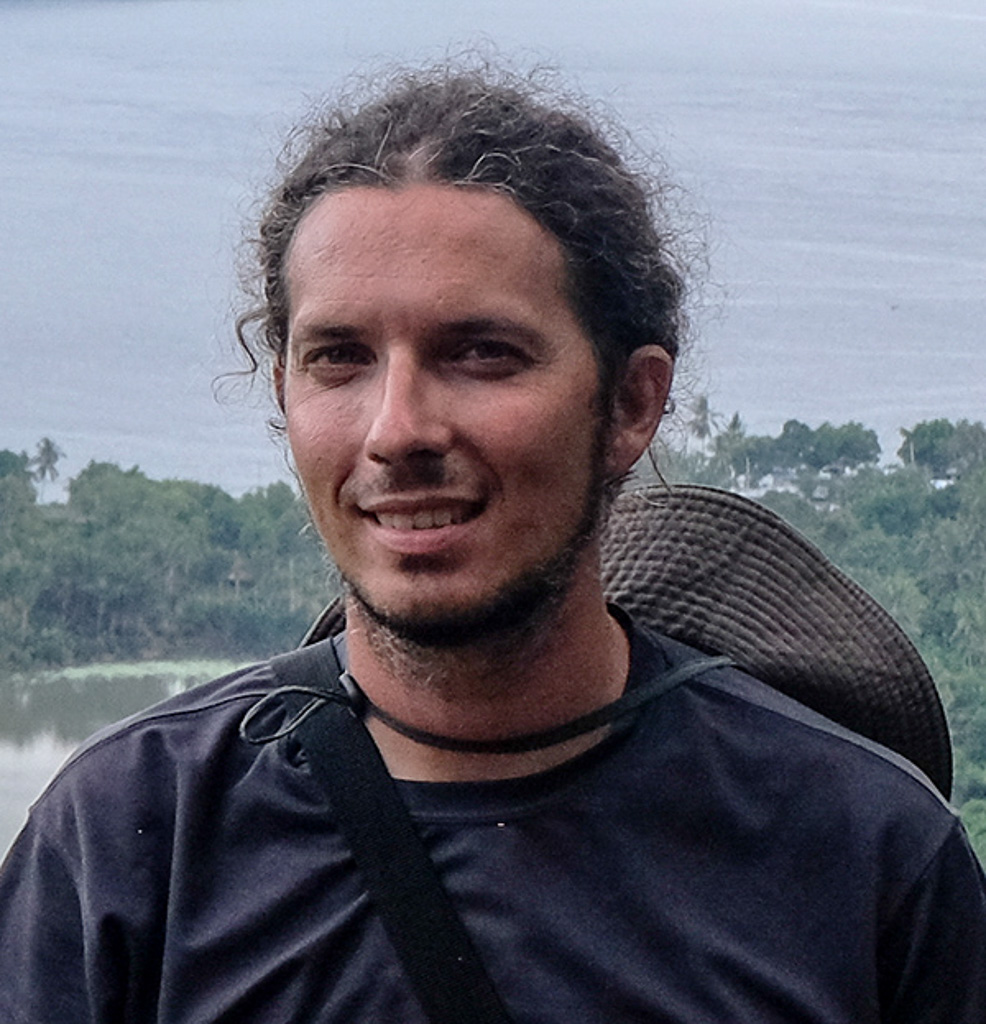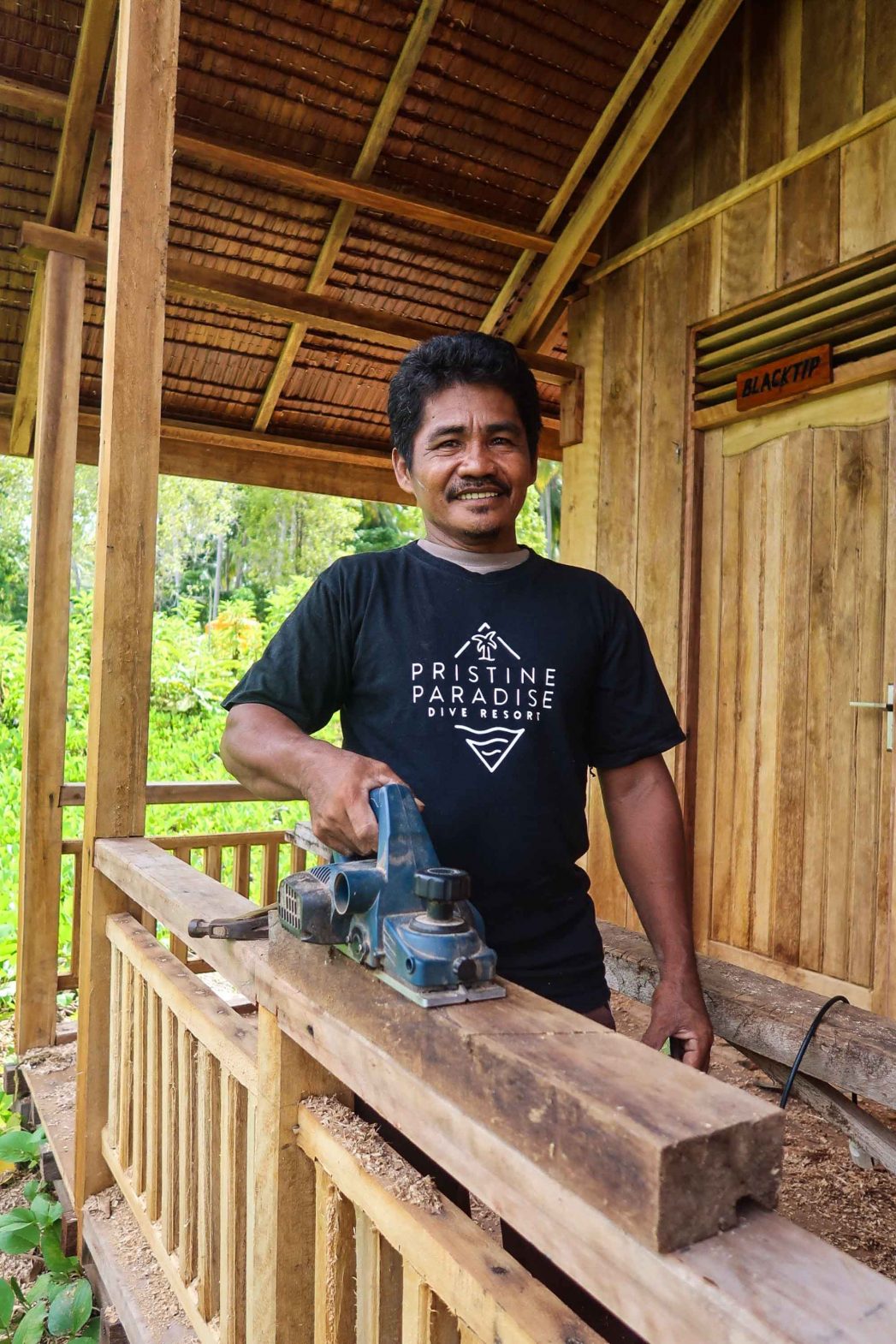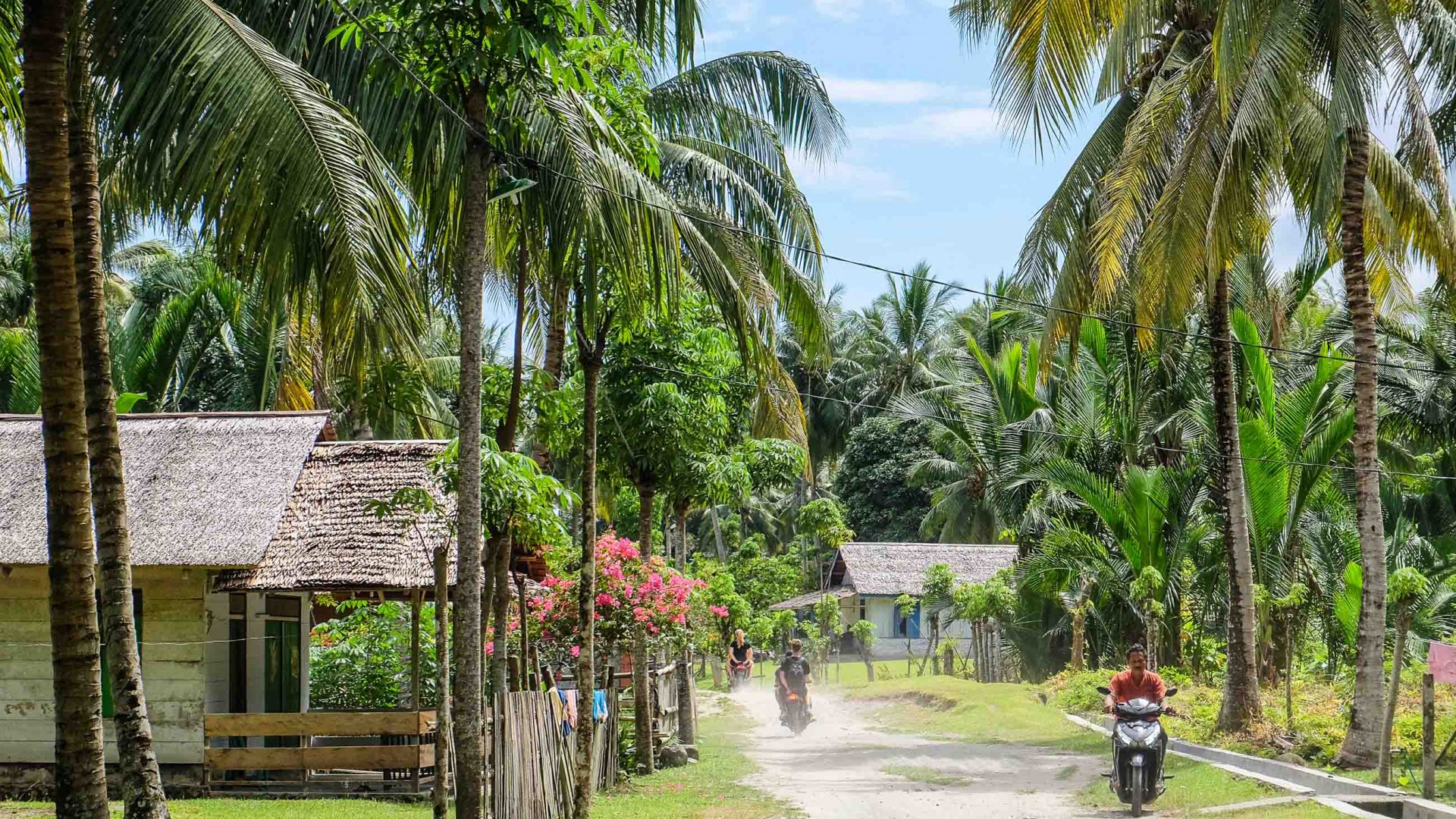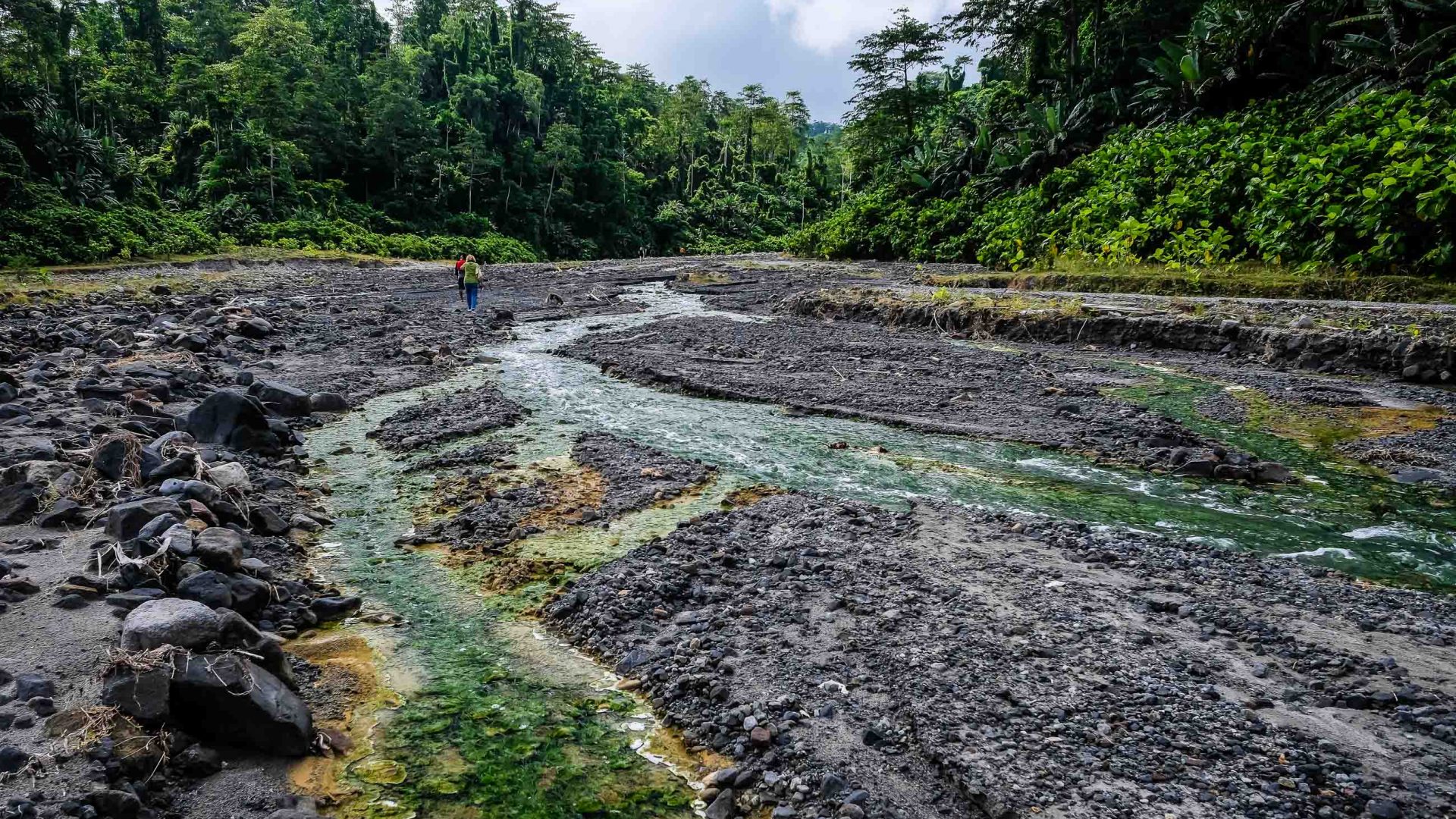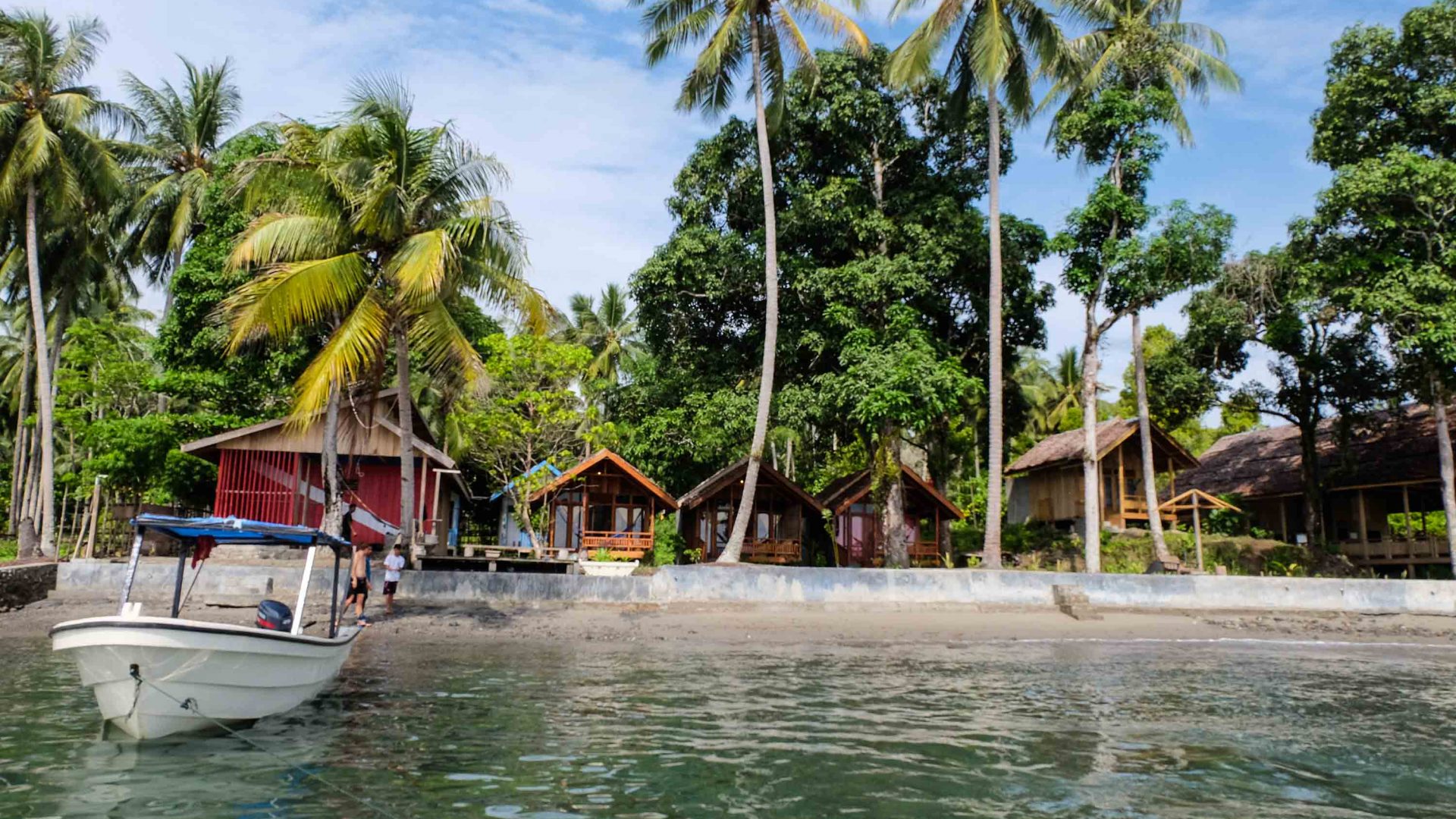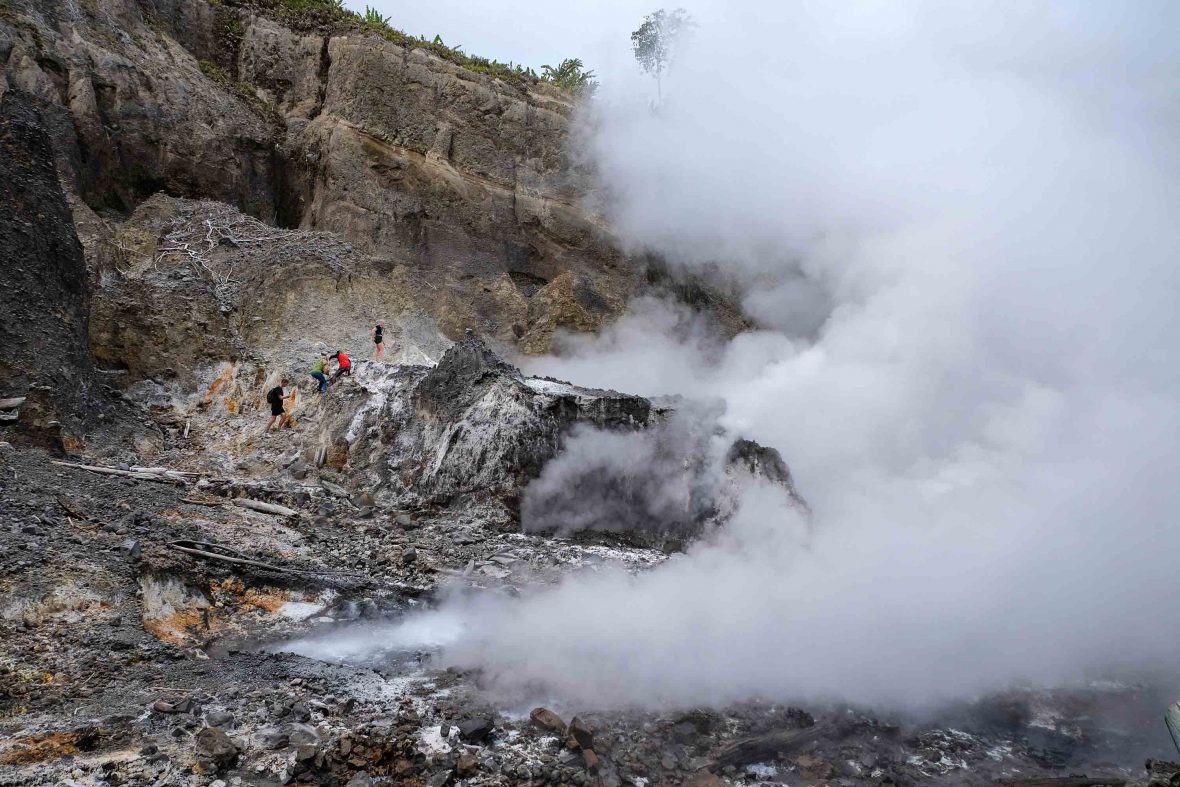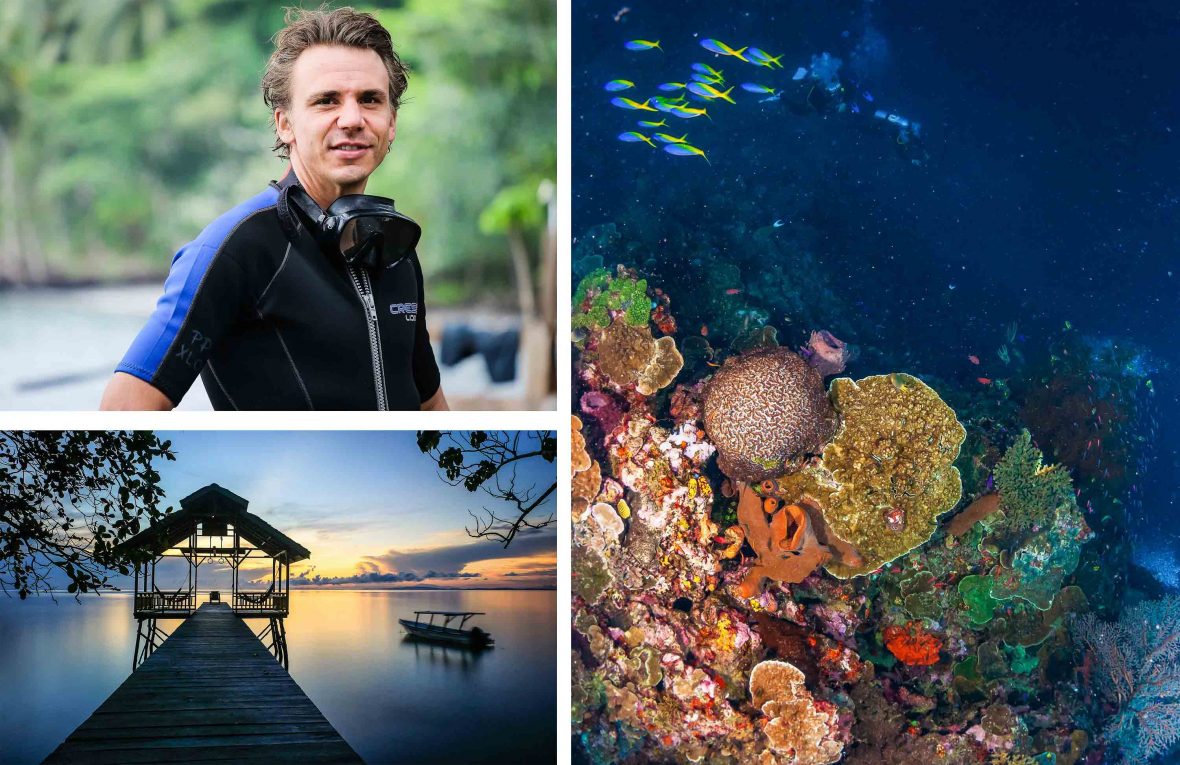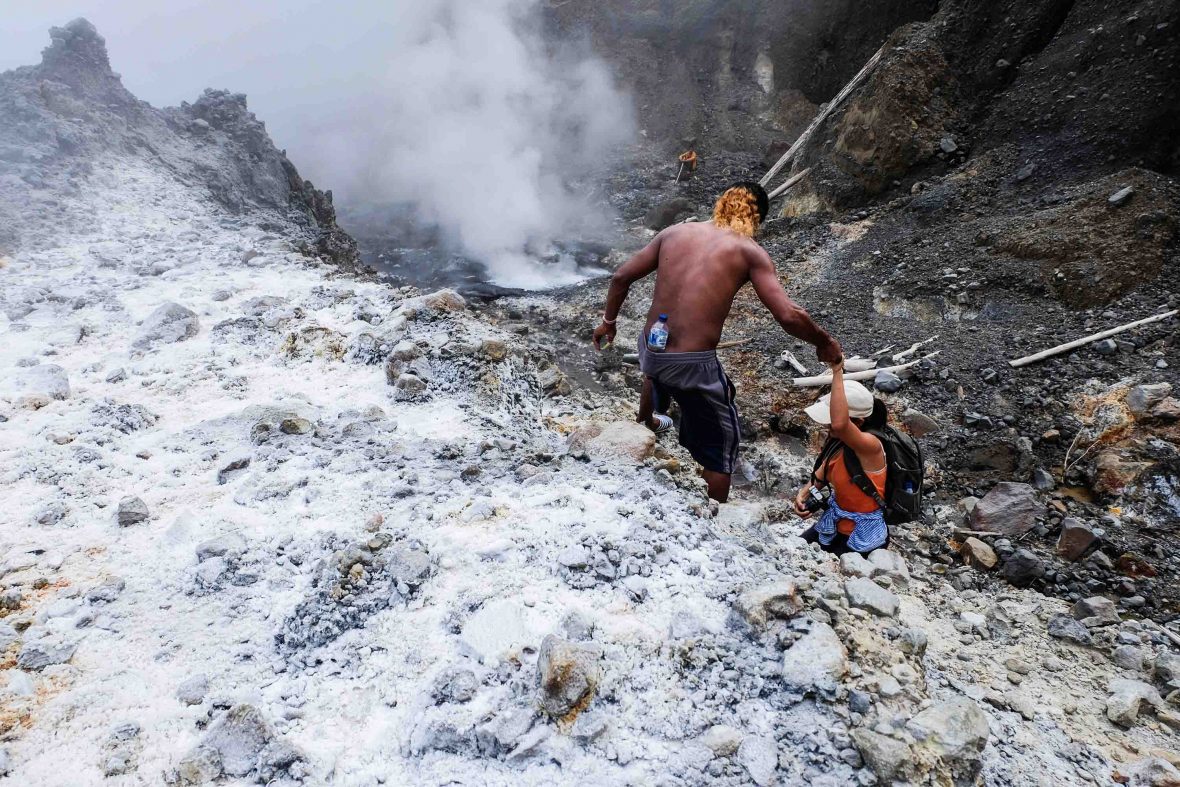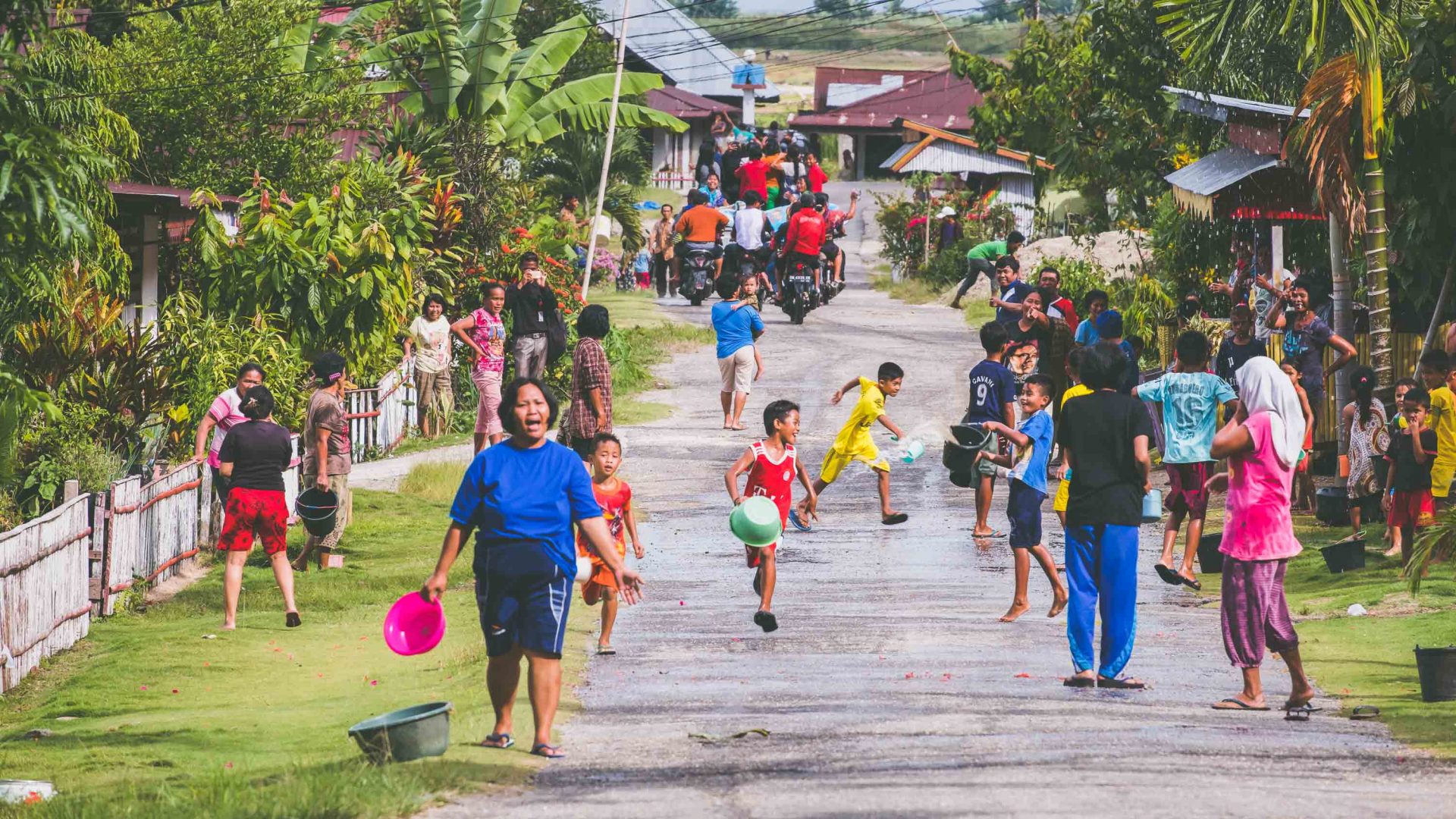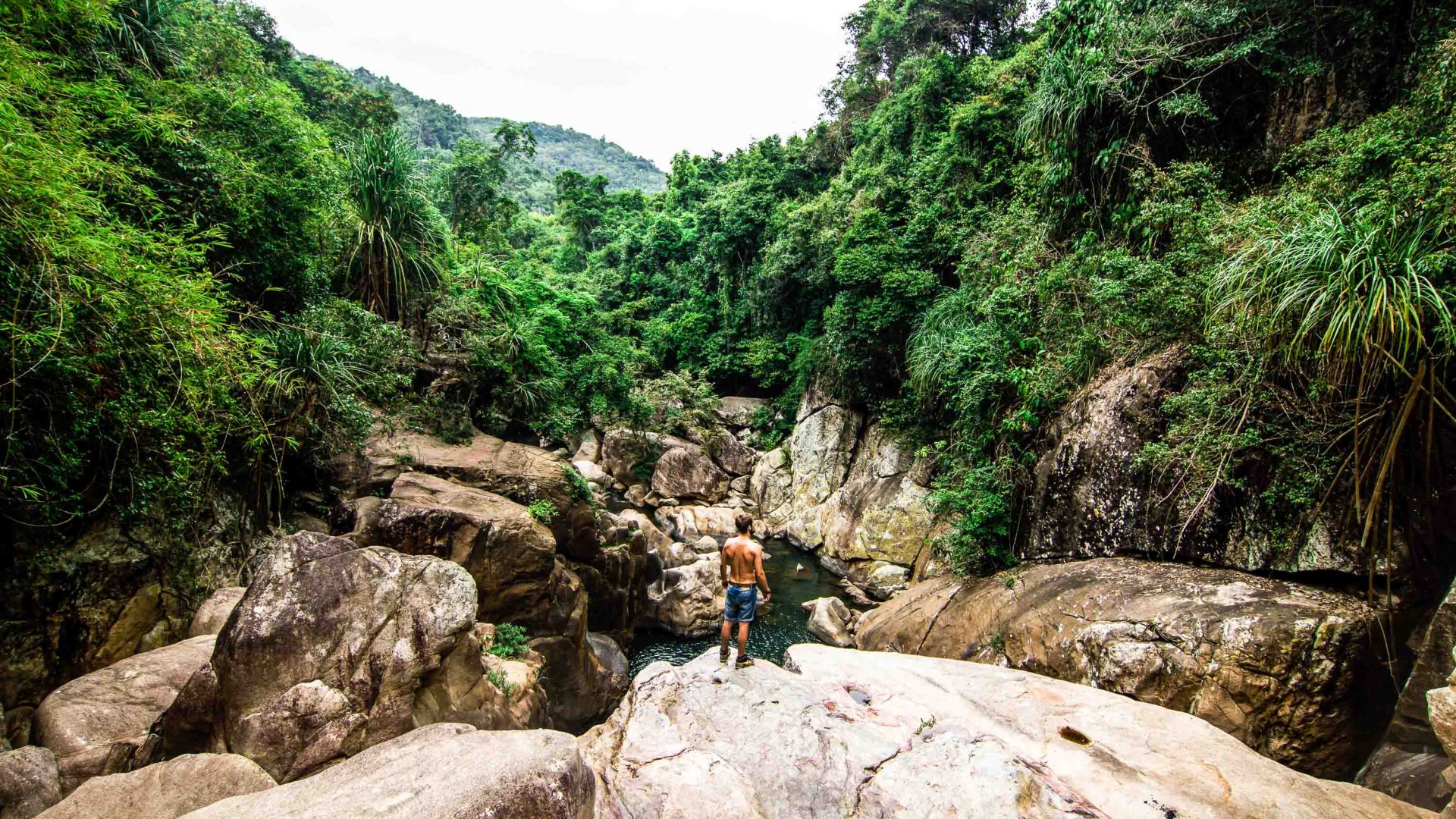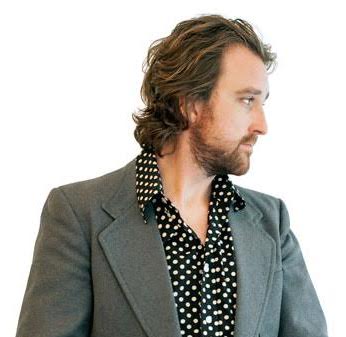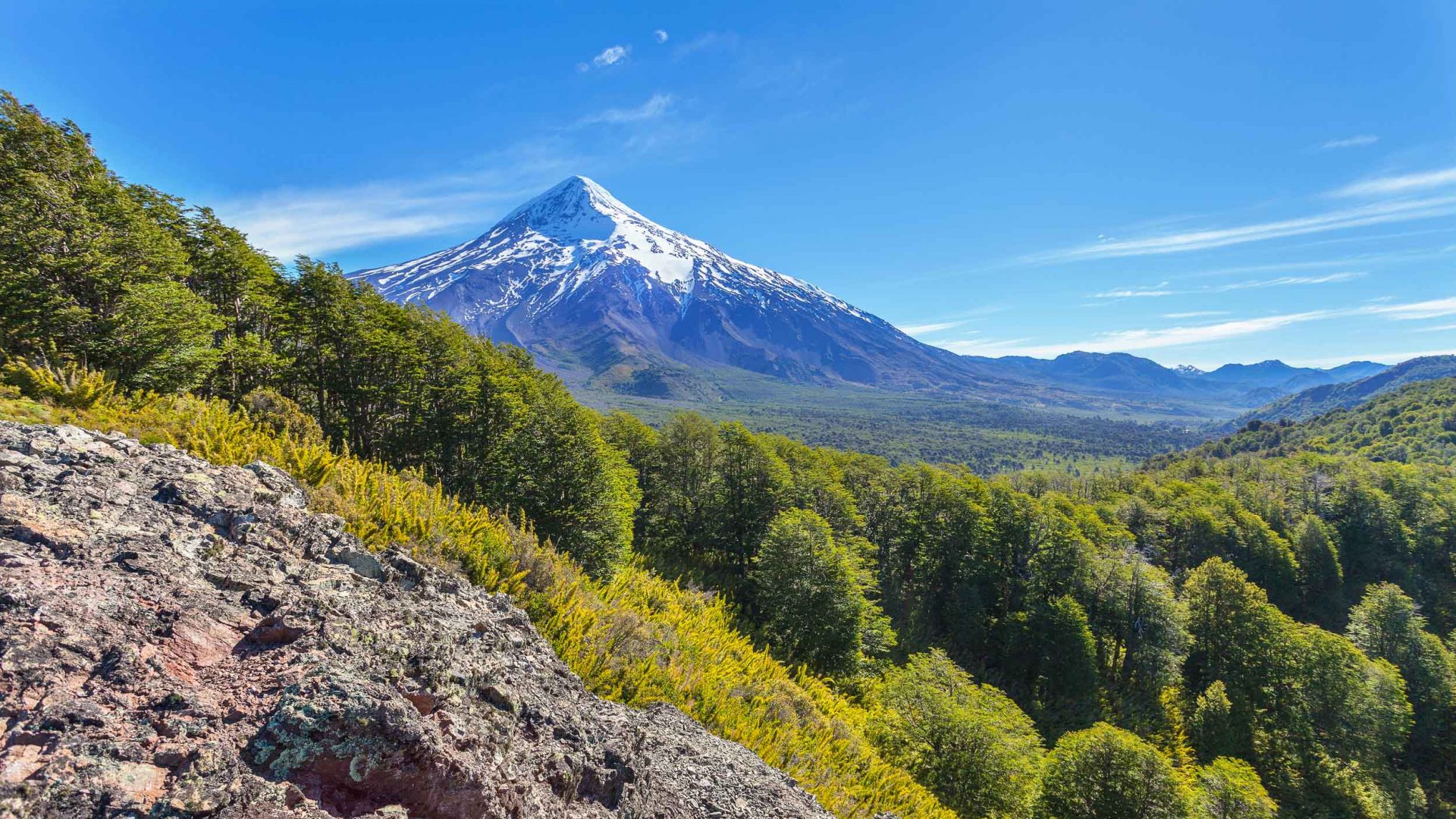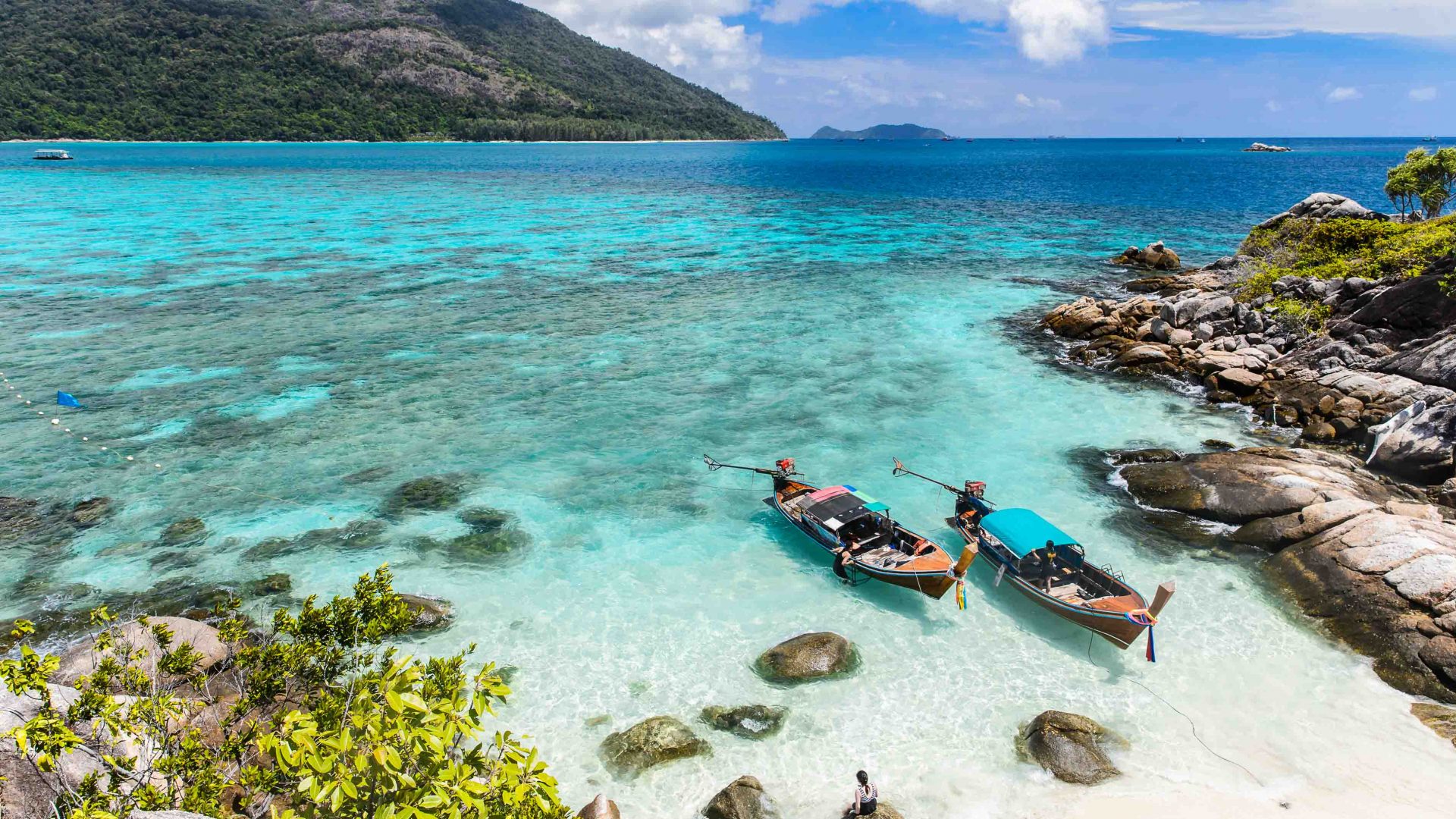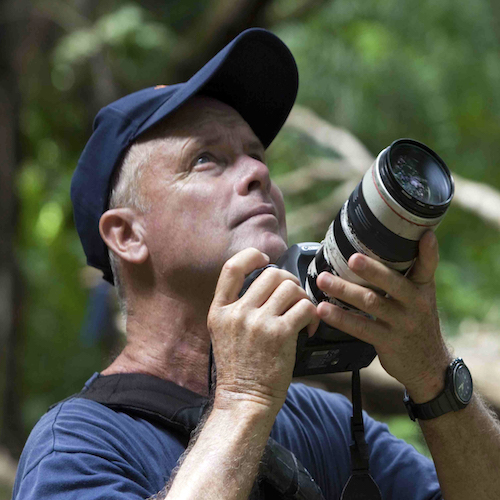
A pristine Indonesian island and a grumpy old volcano teaches travel writer Marco Ferrarese that sometimes, nature will look after herself—whether anyone realizes it at the time or not.
Bent over a plank of wood, Papa Opi expertly smudges its raw surface into a smooth, polished piece. A proud creator, his hands shuttle up and down, firmly gripping his tool’s handle. It’s only when he takes a break from the wood that he lifts his head up, and our gazes finally meet.
The calm in Papa Opi’s eyes belies a tragic tale of survival. The same calm emanates from his voice when he starts telling me about the 1983 eruption of Gunung Colo. Once a mighty conic volcano, today’s Colo lays dormant on the opposite side of Una-Una island. But it’s never quiet: Its cracked caldera still hisses white sulphurous gases, as if the volcano never wanted to stop talking.
That slice of hell on earth is not far from where we are both standing—a 30-minute motorbike ride (there are no cars on Una-Una) across the island’s rutted jungle tracks and a dry river bed leads visitors straight to the mouth of that fire mountain.
